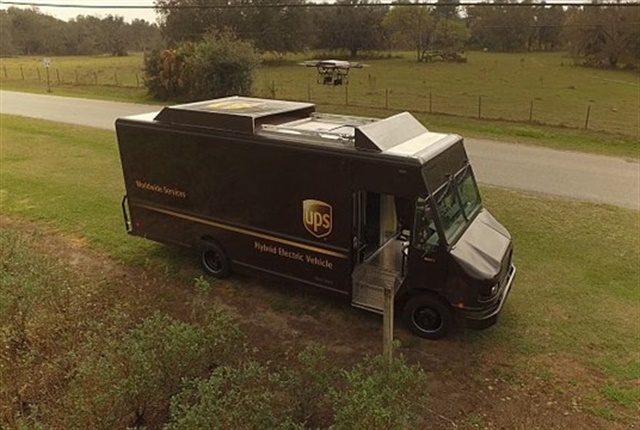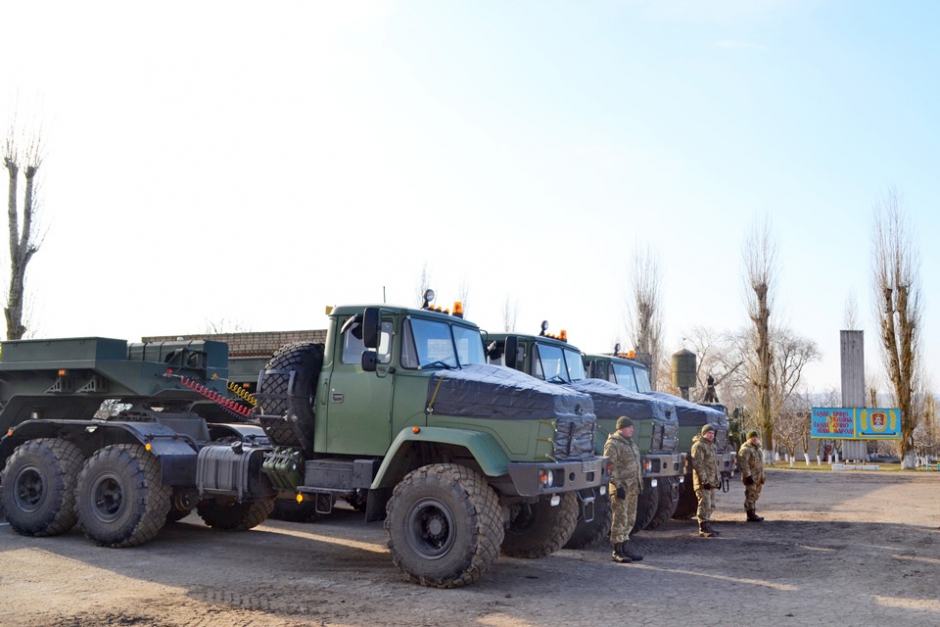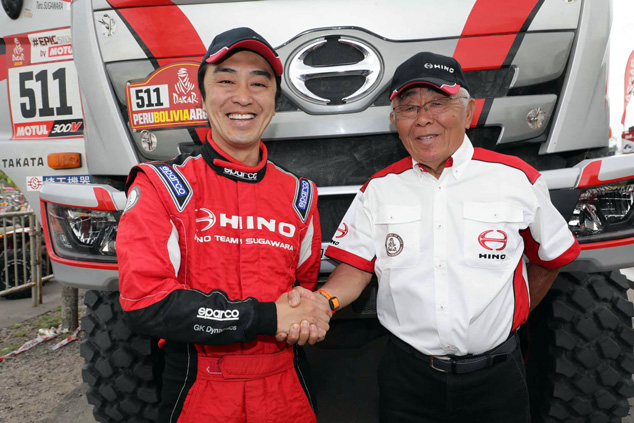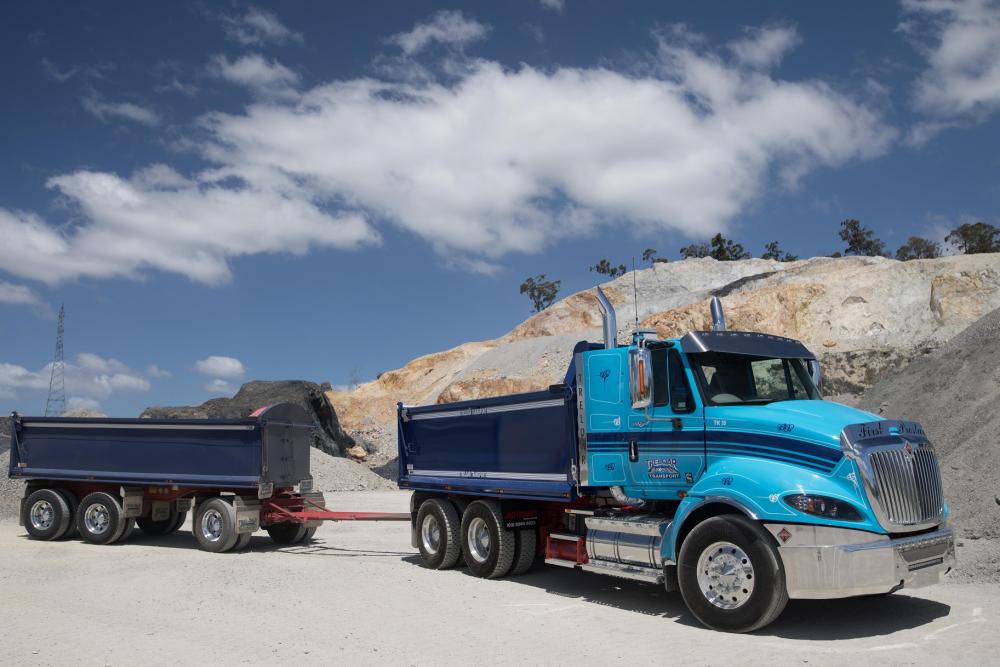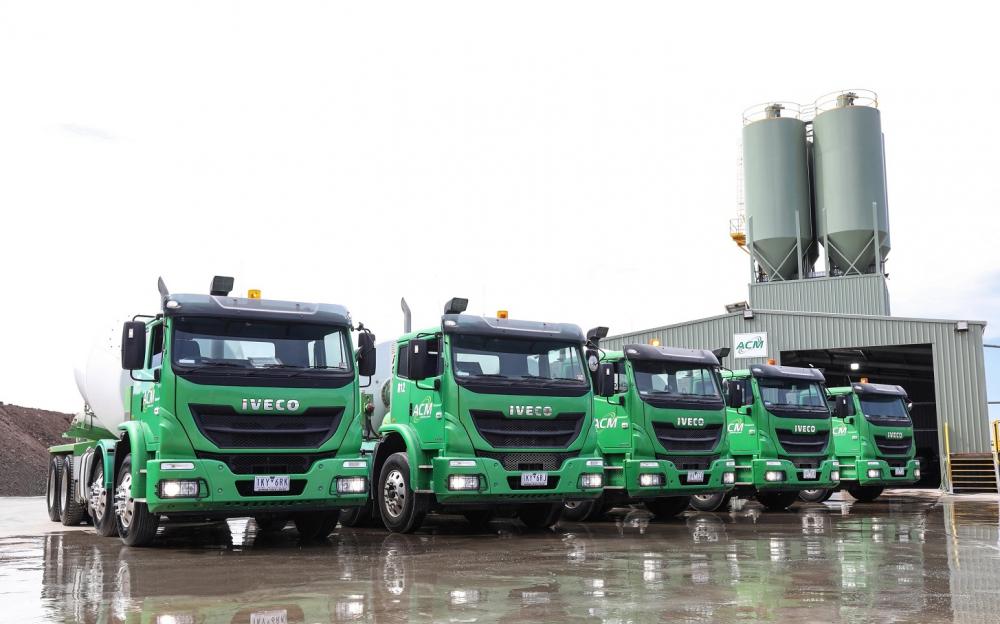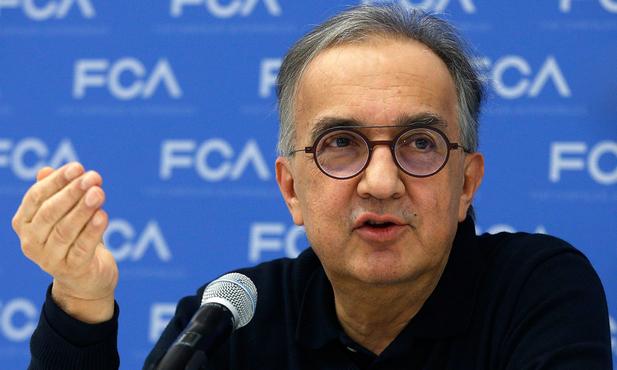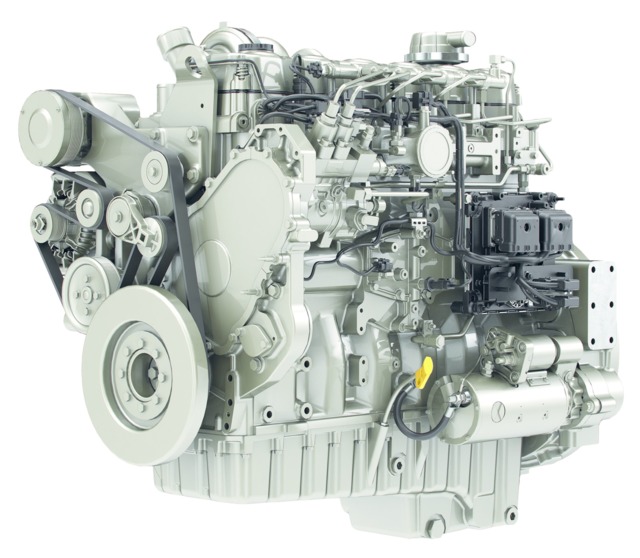
kscarbel2
Moderator-
Posts
17,892 -
Joined
-
Days Won
86
Content Type
Profiles
Forums
Gallery
Events
Blogs
BMT Wiki
Collections
Store
Everything posted by kscarbel2
-
The US market Mack brand team hasn't put out a video in four months. https://www.youtube.com/user/ut06265/videos But since they're so bad, that might be a good thing for sales.
-
Heavy Duty Trucking (HDT) / January 24, 2018 The Teamsters union is seeking to prevent UPS from using driverless vehicles or drones to deliver packages, the latter of which the parcel delivery company had already performed a number of tests on, reports the Wall Street Journal. The labor union also wants UPS to ban deliveries after 9 p.m. and add an additional 10,000 workers, according to the Wall Street Journal. In February 2017, UPS successfully tested a drone that launches from atop one of its package cars. This system is designed to autonomously deliver a package while the truck is driven on a route. Previously, UPS and the Teamsters union recently clashed in December 2017 about the parcel delivery company's decision to bumping up driver workweeks to accomodate holiday deliveries, according to the Atlanta Business Chronicle. The Teamsters and UPS are currently negotiating one of the largest collective bargaining agreements in the U.S., which covers around 260,000 UPS employees and expires in July, reports The Wall Street Journal. A recent study by C.J. Driscoll & Associates found the last leg of delivery between distribution centers and buyers has become an issue for e-commerce, which accounted for 11.7% of retail sales in 2016, versus 10.5% in 2015. In October 2017, the Trump Administration moved to establish a coherent federal policy governing the use of drones in delivery applications, according to a presidential memorandum issued last October. The Teamsters and UPS are currently negotiating one of the largest collective bargaining agreements in the U.S., which covers around 260,000 UPS employees and expires in July, reports The Wall Street Journal.A recent study by C.J. Driscoll & Associates found the last leg of delivery between distribution centers and buyers has become an issue for e-commerce, which accounted for 11.7% of retail sales in 2016, versus 10.5% in 2015.In October 2017, the Trump Administration moved to establish a coherent federal policy governing the use of drones in delivery applications, according to a presidential memorandum issued last October. .
-
KrAZ Trucks Press Release / January 19, 2018 Weapons have been awarded and vehicles have been given on occasion of new training year 2018 to personnel of maintenance regiment of Ukraine’s Armed Forces in Nikolayev region. New KrAZ vehicles and truck tractors with semi-trailers came into possession of maintenance regiment personnel from the Ministry of Defence of Ukraine. For more information, go to the site of the Ministry of Defence of Ukraine. Various KrAZ vehicles and KrAZ-based special vehicles are presently in service with different units of National Guard, State Border Guard Service of Ukraine, and Armed Forces of Ukraine. Most of them are the KrAZ-6322 and KrAZ-5233 off road platform trucks, the KrAZ-6446 truck tractors, the KrAZ-Spartan, KrAZ-Cougar, KrAZ-Shrek armored vehicles. It should be noted that new KrAZ vehicles are provided with alternative power plants and units offering higher horsepower, torque, reduced specific fuel consumption and improved full load operation. What is more, they feature better weight and size parameters, reliability and longer time between overhauls. Except new power plant, mass produced off road vehicles are equipped with many units and systems making them more efficient and strong such as: - aluminum radiator instead of brass one with better endurance, thermal conduction, heat transfer, and hydraulic resistance; - rectangular silencer with partitions instead of cylindrical straight through resonator-type silencer to reduce ambient noise level and resistance of exhaust system and improve performance; - new clutch featuring better resistance to wear, reliability and stability; - integral steering with built-in distributor and booster with better performance to exclude power booster cylinder; - electronic control for tire inflation system by means of electric valve, switch and warning light on the dashboard helps improve working conditions for driver by using tire inflation system control switch within the reach of driver instead of hand valve under the dashboard, ensure cab tightness by excluding hole in the cab structure front panel and simplify tire inflation air system by excluding steel and flexible air limes. Kremenchug Automobile Plant builds a line of special vehicles available in various axle configurations, layouts and provides them with power plants, units and systems from various manufacturers at the customer’s request. Domestic manufacturer “KrAZ” fulfills orders for any amounts of any products available in the company’s lineup. .
-
Prime Mover Magazine / January 25, 2018 Hino Team Suguwara’s success in the Dakar Rally has continued with a record ninth consecutive class victory in the 2018 event. After 15 days and 14 stages of competition, Hino Team Suguwara’s Car 2 delivered a stunning performance to win the highly-competitive Under 10-litre class and finish sixth overall. Speaking at the finish line where he greeted the competitors, Hino Motors Chairman, Yasuhiko Ichihashi said: “I am very happy that the team was able to fulfil their goal of winning their ninth straight win in the Under 10-litre Class." Driver of Car 2, Teruhito Sugawara, enjoyed the challenges of the difficult course which traversed many areas he hadn’t previously raced in. “This was the 20th Dakar Rally for me personally, and I'm glad that we were able to achieve the results that we aimed for," Sugawara said. “I think we were able to make the best of our current potential so it was very satisfying in that respect too.” Hino Australia National Marketing Manager, Dimitri Andreatidis, congratulated the team on its success: “Sixth place against competitors with larger trucks is a significant achievement and one that we at Hino Australia are very proud of, especially as it is two places higher than last year. “The reliability of the Hino team once again shone through with a ninth consecutive class victory.” Both of the Hino Dakar Rally 500 Series vehicles used an enhanced version of the Hino A09C 6 cylinder engine, which is available as an option in the 500 Series Wide Cab trucks in Australia. The two 2018 Dakar Rally Hino trucks included the 8,866cm3 direct injection turbocharged and intercooled engine matched to a six-speed direct drive gearbox with secondary transmission, two-speed transfer and a part time all- wheel drive (AWD) feature in Car 1 and full time AWD in Car 2. The 40th Dakar Rally finished on 20 January after 15 challenging days that saw competitors race through Peru, Bolivia and Argentina. .
- 1 reply
-
- 1
-

-
Diesel News Australia / January 25, 2018 Is this the truck of the future? Or is it the truck of the past? It is, in fact, a futuristic prototype truck which was built well over ten years ago. The Colani TUM Supertruck of 2006 was dubbed the ‘Innotruck’ and took the separated driving compartment concept to new levels. A powered aerodynamic lower module contained all the mechanicals of a conventional prime mover including a fifth wheel. On top of this sat the semi-trailer that included a cab integrated into the trailer’s nose, reduced to a conical glass canopy projected out from the streamlined trailer body rather like the Concorde’s nose. The concept included the race car-like power module, the semi trailer and a third full trailer. It was designed and built in cooperation with a team from the Technical University Munich (TUM) and was intended as a demonstration vehicle with a meeting room occupying the trailer behind the pointed single seat driving compartment. Entry and exit from the driving compartment was achieved by sliding the nose, windshield and forward windows forward for the driver to step up and into the driving seat. .
-
Freightliner Trucks Australia Press Release / January 2, 2018 .
-
IVECO Trucks Australia / January 25, 2018 IVECO Australia has announced an additional power rating for INTERNATIONAL® ProStar® models, providing buyers with a new 600 horsepower (447 kW) / 2,050 lb.ft (2,779 Nm) option, along with the existing 550 horsepower (410 kW) / 1,850 lb.ft variant (2,508 Nm) rating. The additional power has been achieved via calibration changes to the ProStar’s 15 litre Cummins X15 engine, in a successful joint project between INTERNATIONAL’s Australian engineers and the team at Cummins South Pacific. INTERNATIONAL® Engineering Manager, Adrian Wright, said the additional output rating was a logical step in offering prospective customers a second power option if the application required it. “For the initial development program, we focused on the 550 horsepower / 1,850 lb.ft rating, as this was the most commonly specified in the B-Double conventional market segment,” Mr Wright said, “but it was always our plan to look at the 600 horsepower rating at a later stage. “With increased ProStar® sales activity and a growing enquiry rate on both 550 and 600 horsepower ratings, the timing has worked well.” In bringing the 600 horsepower option to market, Mr Wright said that there was close collaboration between INTERNATIONAL’s local engineering team and Cummins South Pacific. “We re-evaluated a full production spec truck and tested it extensively both on the road and on the dyno,” he said. “The truck performed exceptionally well and easily met all of Cummins’ stringent requirements for Australian heavy haul applications. “The 550 horsepower engine is a strong performer but the additional torque of the 600 horsepower engine will allow the truck to hold a higher gear for longer which can be advantageous for certain applications and can even help save fuel in some circumstances.” Both engine ratings can be specified across the entire ProStar range encompassing ‘Tipper’, ‘Day cab’, ‘Extended cab’ and ‘Sleeper cab’ models, with either the Eaton 18-speed manual transmission or Eaton’s clever ‘UltraShift Plus’ 18-speed automated manual. .
-
IVECO Trucks Australia / January 22, 2018 Leading concrete and construction products company ACM, is looking to capitalise on Melbourne’s booming western suburbs with the opening of a new batching plant in Rockbank and the acquisition of 10 new ACCO 8x4 agitators to service customers in the region. Established in 2009, ACM now operate 38 trucks from two sites with a key differentiator for the company being its strong commitment to sustainability – the philosophy is captured in its company tagline ‘Redefining Green’. To achieve this, the business has a number of initiatives in place to minimise its environmental impact, these include collection of stormwater for use in its concrete and crushing plants, the use of recycled rock and concrete in making its concrete aggregates, the adoption of dust suppression systems at all plants and the use of ‘E-Cretetm’, a replacement for conventional concrete that delivers up to 80 per cent less carbon output than traditional concrete. Fittingly, ACM has chosen a bright green livery for its fleet that is hard to miss on the road or at the building site, further drawing attention to the company’s strong environmental aspirations. The new ACCOs are all equipped with 7.4 cubic metre bowls and are an ideal fit to service a range of customers across civil, residential and commercial sectors, according to ACM General Manager, Digby Crawford. “The great thing about the ACCOs is that they are fit for purpose – the trucks and all of the driveline componentry is proven, reliable and long lasting,” he said. “Maintenance on the trucks and availability of parts is another benefit, you can find replacement parts everywhere, which minimises the likelihood of any downtime. “Another attractive aspect of the ACCOs was the availability of Electronic Stability Control which is important in this application where the load has a higher centre of gravity.” Although the ACCOs were a well credentialed concrete truck on paper, their selection was by no means a given, with Digby undertaking extensive research before finally settling on the IVECOs. “We looked closely at five different brand trucks all up, but in the end the ACCO had the best all-round package,” Digby said. “The combination of low tare weight, industry standard components, cab over design which allowed us to better manoeuvre in confined spaces and superior serviceability won over.” The trucks all feature 340 hp engines with 1500 Nm of torque and are coupled to 6-speed full automatic transmissions, and while the vehicles will only cover approximately 20,000 kilometres per year they will face high running hours. Suspension on the trucks is handled via rear rubber block, while up front the trucks run integrated air suspension, a combination that has drawn praise from ACM drivers. “The drivers are complimentary of the ACCOs, they drive well and in particular they mention that the ride is very smooth and comfortable,” Digby said. “The Rockbank facility and the 10 new ACCO agitators are important components of ACM’s future growth and are helping us ‘Redefining Green’. “We also have another plant under construction in Clyde (South East Melbourne) which is due to open in early 2018 – a further 10 ACCOs have been ordered for this site.” Photo gallery - https://www.iveco.com.au/whatson/ten-new-iveco-accos-cement-acm-expansion-with-further-10-on-order .
-
Mack Trucks Australia / January 18, 2018 .
-
Kenworth Trucks Australia / January 15, 2018 . . .
-
FCA posts $1 billion Q4 profit, predicting 'strong likelihood we'll outperform Ford in 2018' Larry Vellequette, Automotive News / January 25, 2018 Fiat Chrysler Automobiles reiterated its plan to be in a net cash position by midyear and hit aggressive financial targets for 2018 set four years ago -- including nearly $10.9 billion of adjusted earnings before interest and taxes -- as the automaker prepares to transition to a new leader with the coming retirement of CEO Sergio Marchionne. And in comments to analysts, Marchionne said there is a "strong likelihood we'll outperform Ford in 2018." FCA said Thursday its fourth-quarter earnings before interest and taxes rose 22 percent to more than $2.37 billion. Net profit nearly doubled to $1 billion. Total revenue in the quarter fell 3 percent to $36.11 billion. Improving margins in North America -- which rose half a percentage point to 7.9 percent -- will mean $5,500 profit-sharing checks on average for UAW members, up from $5,000 a year earlier, FCA said. These payouts will be on top of a $2,000 bonus paid to all U.S. workers, except top executives, related to U.S. corporate tax cuts. Changes in U.S. tax law are projected to save the company $1 billion a year. FCA cut its industrial debt almost in half last year, to 2.39 billion euros ($2.97 billion). Marchionne and CFO Richard Palmer said the company expected to have more cash on hand than debt by midyear, the first time since Fiat S.p.A. acquired the formerly bankrupt Chrysler in 2009. Shares in FCA rose 0.75 percent to close at $24.32 on Thursday. Comments to analysts In comments to analysts, Marchionne said the automaker would lay out its 2018-22 business plan for analysts at an event June 1 in Balocco, Italy, but would not name his successor until after that event. Marchionne plans to retire early next year after seeing the business plan through 2018 to completion. The CEO, who has run Fiat since 2004, has said his successor will come from the ranks of the automaker's global executive council. In other comments, Marchionne said: Despite plans to keep the previous-generation Ram 1500 pickup in production for at least a year to answer demand from commercial fleet customers, the CEO said he was "not interested in starting a share war in the United States" with Ford or General Motors in the pickup segment. "That's not the objective," Marchionne said. The FCA board will decide in February whether to spin off or sell off Magneti Marelli and its other components businesses. Since no other automaker expressed interest in forming a partnership with FCA, the company's improved balance sheet will mean "we're going to keep running our business and running our business hard," Marchionne said. "Given the parameters of this industry, FCA is well-positioned to be a top performer, and that's all I care about." While the company will be well short of the 7 million vehicles it projected in 2014 to sell in 2018, the financial targets will be achievable because of unforeseen levels of profitability from Maserati, Jeep and Ram. But, Marchionne warned, much of 2018's performance rests on properly executing the launches of the redesigned Ram 1500 and Jeep Wrangler. "I think the biggest risk ... is that we screw up all those launches and we can't deliver the volumes. That's the real issue -- that we can't make it." Additional manufacturing capacity brought about because of its reindustrialization plan in North America could mean as many as 50,000 additional Ram 1500 pickups and 60,000 Wranglers annually on an ongoing basis, once those recently launched products are fully ramped up. Marchionne said the additional Wrangler capacity would allow FCA to export the vehicle in greater numbers instead of limiting that global distribution to satisfy demand in North America. Both Fiat's and Chrysler's previous dire financial straits embedded fiscal discipline deep into the DNA of the automaker's top management. That should prevent it from spending wildly when times are good. "One of the things that came along with being poor ... is that you learn how to do with less. I have not forgotten, and no one on the leadership team has forgotten, what it was like." Alfa Romeo will again not be profitable in 2018, but it will return to Formula One racing after his retirement as the resurrected brand continues to grow beyond beyond its current lineup. "We're still building the brand, but we need more volume." Bloomberg contributed to this report. .
-
Ford will disclose product cuts later this year Reuters/Bloomberg / January 25, 2018 Ford Motor Co. will disclose details later this year of its investment shift to SUVs and crossovers from passenger cars. On Jan. 17, Ford said it will scale back its car offerings and offer far fewer iterations of models that survive as it seeks to become leaner and nimbler, and improve profit margins. Reporting fourth-quarter and 2017 earnings Wednesday CEO Jim Hackett declined to offer more details to frustrated analysts, saying only that he would share details later this year. Ford is considering where the biggest opportunities are, he said. Executives have said that Ford is implementing business practices focused around Hackett’s mantra of "smart vehicles for a smart world." This includes $14 billion in costs cuts, simplifying orderable products, and tailoring its model lineup to higher-margin segments for different parts of the world. The investment shift means Ford will focus on performance SUVs and "authentic off-roaders" where the automaker can get higher profits, Jim Farley, president of global markets, said earlier this month. Ford expects its utility-vehicle mix will increase 10 percentage points over the next couple of years, while its car portfolio will shrink about 10 percentage points, the company said on Jan. 17. On Wednesday, Chief Financial Officer Bob Shanks said that Ford isn’t as fit as its peers, and that is stopping it from achieving its desired profit margins of around 8 percent. Ford’s 2017 pretax profits fell 19 percent to $8.4 billion, reducing its operating profit margin to 5 percent from 6.7 percent in 2016. Fourth-quarter adjusted pretax profits fell 19 percent to $1.7 billion due to higher steel and aluminum prices, as well as adverse currency rates. In Europe, Ford's pretax profit slid 66 percent to $56 million in the fourth quarter and fell 81 percent to $234 million for 2017. Most of the full-year drop was attributed to Brexit-related charges, as well as higher commodity and warranty costs. Shanks said Ford's revenue will be bolstered by the launches of 23 new vehicles globally this year, up from 11 last year. Ford's key upcoming launch in Europe is the new Focus compact hatchback, which arrives later this year. Ford is also preparing an ambitious plan to roll out robot taxis and driverless delivery vehicles by 2021.
-
Solid Reductant Storage for SCR Systems W. Addy Majewski, DieselNet / January 2017 SCR systems that store a solid ammonia precursor and deliver gaseous ammonia reductant to the SCR catalyst allow for improved low temperature performance compared with urea-SCR systems. Two main groups of materials that can store ammonia and release it on heating include metal chloride ammines and ammonium salts. Solid SCR systems under development utilize strontium ammine chloride or ammonium carbamate for ammonia storage. Introduction Selective catalytic reduction (SCR) has been introduced to control NOx emissions from a range of diesel engines, including light- and heavy-duty highway engines and nonroad diesel engines. Water-based, 32.5% solution of urea—known as AdBlue® in Europe and diesel exhaust fluid (DEF) in North America—has been used as the source of ammonia in practically all SCR systems for diesel engines. Urea solutions, however, show a number of disadvantages, especially during low temperature operation such as cold start of slow urban driving. A minimum exhaust gas temperature of about 200°C is required to ensure a complete decomposition and hydrolysis of urea to ammonia. If urea is dosed at insufficient exhaust temperatures, deposits are formed over the catalyst and in the exhaust system. Creating uniform ammonia distributions is also problematic, typically requiring a static mixer and/or a certain minimum length of piping between the urea injection point and the catalyst inlet, which complicates exhaust packaging. An additional disadvantage of AdBlue/DEF is its freezing point of -11°C, necessitating the use of heating in SCR systems in cold climates. A number of alternative ammonia storage materials have been identified to address the issues with urea [Fulks 2009]. The alternative ammonia storage and delivery concepts that attract most attention are those that utilize solid materials—such as ammonium salts or metal ammines—which contain ammonia and release ammonia gas when heated. In this type of a solid SCR system, a cartridge or canister with a solid material—an ammonia precursor or a substance with absorbed ammonia—is carried on the vehicle. During vehicle operation, the material is heated to release pressurized ammonia gas, which is metered into the exhaust gas using a control valve. Once the cartridge becomes depleted, it has to be removed from the vehicle and re-charged with ammonia using specialized equipment. In solid SCR systems, gaseous ammonia can be introduced into the exhaust gas at any temperature, including slow urban driving or engine idle conditions. If SCR catalysts with good low-temperature activity are used, NOx can be reduced at temperatures significantly below 200°C. The performance improvement due to the use of gaseous ammonia as the reductant is illustrated in Figure 1 [Karkamkar 2016]. However, it should be noted that solid SCR technologies cannot address low temperature SCR issues that are rooted in the chemistry of ammonia, rather than urea. Such an issue is the formation of ammonium nitrate (NH4NO3) via reactions between NO2 and NH3 at temperatures below 200°C. While examples of SCR operation with continuous ammonia dosing during urban driving were reported in the literature [Johannessen 2010], continuous low temperature SCR operation may not always be possible depending on the exact temperature and NO2 concentration. In SCR systems with advanced control algorithms, the amount of deposits (such as NH4NO3) is calculated as a function of the amount of injected reductant and the operating conditions, and reductant dosing is stopped once a maximum allowed deposit mass has been reached. Hence, while solid SCR systems can help meet NOx emission limits in testing over regulatory test cycles with low temperatures—such as the chassis FTP schedule—they still may face limits in reducing NOx in applications characterized by prolonged low exhaust temperature operation. Commercial Viability & Infrastructure. The scope of commercial applicability of solid SCR systems will depend on several factors—including their cost competitiveness with urea-SCR systems. At least two solid SCR systems have been under development: (1) a metal ammine chloride system by Amminex and (2) an ammonium carbamate system by FEV/Tenneco. A limiting factor in the adoption of solid SCR is the lack of infrastructure for the replacement and re-charging with ammonia of used cartridges. Compared to urea-SCR, the logistics are more complex with solid SCR, as both empty and re-charged cartridges need to be handled. A number of types and sizes of cartridges may be also envisioned in solid SCR systems, depending on the type and size of vehicle. Therefore, solid SCR seems to be most suitable—at least in the initial period—for vehicles operated within a limited range. Urban delivery trucks or buses, for example, could be supplied with cartridges within a geographically limited distribution network. If the commercial reach of solid SCR widens, infrastructure will have to be developed to supply and recharge/recycle ammonia storage cartridges. In the case of metal ammine-based technologies—where the cartridges are charged using pure, anhydrous ammonia—the necessary infrastructure could be built based on the existing ammonia distribution network [Johannessen 2010]. The cartridges could be recharged with ammonia in recharge stations located near ammonia distribution centers. Several industrial gas suppliers operate extensive networks of ammonia ‘hubs’ and each of these ‘hubs’ may potentially serve as the basis for a recharge station. In an expansion scenario, solid ammonia cartridges can be envisioned to be handled in a similar manner to propane bottles for end-user applications, such as barbecues. End-users would not have to consider the fate of a used solid ammonia storage cartridge—it would be handled by professional organizations that would control the logistics, recharge and quality assurance. It may be noted that solid ammonia storage also shows certain advantages compared to the urea infrastructure: no multiple quality assurance steps are required in the reductant supply chain. With a well-defined solid cartridge that has been quality assured from production or recharge, the content of the unit will not be exposed to the surroundings and will not degrade under any—hot or freezing—climatic conditions.
-
Solid Ammonium SCR System for Control of Diesel NOx Emissions SAE / January 14, 2017 One of most effective NOx control technology of modern diesel engines is SCR with ammonia. Current NOx reduction systems are designed to use a solution of urea dissolved in water as a source of ammonia. However, the liquid urea systems have technical difficulties, such as a freezing point below −11°C and solid deposit formation in the exhaust temperature below 200°C. The objective of this study is to investigate the possibility of a new ammonia generation system that uses low-cost solid ammonium salt, such as solid urea and ammonium carbonate. The result shows that ammonium carbonate is more suitable than solid urea because of low decomposition temperature and no change to the other ammonium salt during the decomposition process. This paper also shows the NOx reduction capability of the new ammonia delivery system that uses ammonium carbonate.
-
This may interest some people. https://energy.gov/sites/prod/files/2014/03/f8/deer09_tatur_0.pdf https://energy.gov/sites/prod/files/2014/03/f8/deer12_johannessen.pdf Here is a high-volume Chinese tractor now being offered with solid SCR as a US$237 option. http://www.360che.com/news/180124/89293.html
-
US Treasury Secretary Mnuchin backs weaker dollar in break with tradition The Financial Times / January 23, 2018 Dollar falls nearly 1% against other major currencies after Treasury chief’s remarks US Treasury secretary Steven Mnuchin has broken with tradition by declaring a weaker dollar is good for American trade in comments that have fuelled market speculation that Washington is seeking to depress the currency to boost the economy. The dollar came under further pressure following the comments at a news conference on Mr Mnuchin’s arrival at the World Economic Forum in Davos on Wednesday, which represented a shift from previous US administrations where Treasury secretaries have resolutely extolled a strong dollar policy. The index tracking the US currency against six peers fell to fresh three-year lows in early New York trading, down nearly 1 per cent to 89.26. The fall left it 2.6 per cent weaker over January, adding to a 10 per cent slide in 2017. Against the euro, the dollar was 0.75 per cent weaker at €0.81, a 2.8 per cent decline over January. On the US dollar weakness in recent weeks, the Treasury secretary said: “The dollar is one of the most liquid markets. Where it is in the short term is not a concern for us at all. “A weaker dollar is good for us as it relates to trade and opportunities. Longer term, the strength of the dollar is a reflection of the strength of the US economy and that it is, and will continue to be, the primary reserve currency.” In an subsequent interview with the FT, Mr Mnuchin said his earlier comments were “completely consistent with what I’ve said before.” He insisted he had said many times that the dollar market is large, liquid and that it was a “factual statement” that a weaker dollar would help the US on trade in the short term. Marc Chandler of Brown Brothers Harriman said: “While Mnuchin was only stating the obvious, Treasury secretaries since Robert Rubin have never deviated from the strong dollar mantra. That mantra has never really meant much, but to deviate from it suggests that US policymakers desire a weaker dollar. “Rubin started this ‘policy’ after his predecessor Lloyd Bentsen used the exchange rate to pressure Japan into opening its markets. Mnuchin’s comments pack an even bigger punch coming after the US trade actions announced this week.” Koon Chow, strategist at UBP, said that by welcoming the fall Mr Mnuchin was changing the market perception “on the policy bias, which clearly invites more depreciation”. Mr Mnuchin brought an uncompromising message that the Trump administration’s America First policies, which include a more protectionist attitude towards trade, were good for the US and the rest of the world. His words, ahead of president Donald Trump’s speech at the forum on Friday, marked the arrival of a huge US delegation to Davos with 10 cabinet members present, which is intended to show American strength and what the Treasury secretary called the “success that we’ve had in the first year under President Trump of the economic programme”. Mr Mnuchin said: “This is about an America First agenda, but America First does mean America working with the rest of the world.” He added: “What’s good for the US is what’s good for the rest of the world given we are one of the largest trading partners for the world, one of the largest investment opportunities . . . We are open for business.” Wilbur Ross, the US commerce secretary who shared the platform with Mr Mnuchin, took a characteristically tough line on the trading policies of other countries including China, the day after the US imposed higher tariffs on washing machines and solar panels. Mr Ross said: “Trade wars are fought every single day . . . And, unfortunately, every single day there are also various parties violating the rules and trying to take unfair advantage. So trade wars have been in place for quite a little while; the difference is the US troops are now coming to the ramparts.” The commerce secretary criticised European finance ministers who have complained that aspects of the Trump administration’s corporate tax plans are anti-competitive and violate international rules. “You may have noticed that both the French and German finance ministers were raising the question about whether our new lower tax rates for corporations were actually trade barriers. That’s a funny concept that someone would complain about a tax reduction is somehow impeding trade.” In conciliatory remarks, Mr Mnuchin said he was working with his European counterparts to resolve disputes over some details in the tax plan but not the overall tax rates. He promised there would be more trade actions to come and said decisions were pending in the fields of intellectual property, steel and aluminium. “What has provoked a lot of the trade actions is inappropriate behaviour of our trading counterparts. Many countries are good at the rhetoric of free trade, but in fact actually practise extreme protectionism,” he said. In a swipe at Justin Trudeau, the Canadian prime minister who at Davos on Tuesday urged a successful renegotiation of Nafta, Mr Mnuchin said the US needed to ensure its opportunities were equal to those of Mexico and Canada. He criticised Mr Trudeau for using the platform at Davos “to put a little pressure on the US in the Nafta talks”. The tough US stance met with a robust response from China at the World Economic Forum. Liu He, who is President Xi Jinping’s most trusted economic adviser, reiterated his country’s “firm support” for economic globalisation. “China has stood firm against all forms of protectionism,” he said in his speech as he praised “initiatives to increase imports” and China’s declared willingness to protect intellectual property. Mr Liu stressed that China was seeking to open up the financial sector, manufacturing and some services, this year to mark the 40th anniversary of its economic reform programme. But he insisted the country would not act alone. “Opening up is not only for China but also for the whole world. Let’s advance economic globalisation together.”
-
https://www.bloomberg.com/news/videos/2018-01-24/ford-moving-to-address-fitness-of-business-cfo-says-video https://www.bloomberg.com/news/videos/2018-01-24/ford-blames-pricey-metals-for-bad-year-video
-
Jennifer Smith, The Wall Street Journal / January 24, 2018 Loads far outnumber vehicles as freight volumes near records; ‘like trying to get a cab at LaGuardia’ A nationwide truck shortage is forcing thousands of shippers into a tough choice: postpone all but the most important deliveries, or pay dearly to jump to the front of the line. Michelin North America Inc. cut its daily shipments of synthetic rubber from one plant by a fifth earlier this month and is at times paying double its usual price for temperature-controlled trucks, said Eric Stuch, a logistics manager at the tire manufacturer. Meal-kit service HelloFresh SE recently enlisted one of its produce suppliers to help move shipments to the airport in a snowstorm. Several factors have converged to overwhelm the trucking market. Freight volumes in December hit near-record levels for that time of year, on the back of a strengthening economy. Retailers are replenishing stocks after one of the strongest holiday sales seasons in recent years. Manufacturers are also shipping more cargo; in December, industrial production had the largest year-over-year gain since 2010, according to the Federal Reserve. What’s more, bad weather and a new federal safety rule that took effect in December have crimped the supply of available trucks. Diesel prices are near a three-year high, adding to transportation costs. In the spot market, where shippers hire trucks on short notice, there were about 10 loads waiting to be moved for every available truck in the week ending Jan. 20, compared with three in the same week last year, according to online freight marketplace DAT Solutions LLC. Spot-market prices for dry vans, the most commonly used big rig, are up more than 20% year-over-year. Analysts expect long-term contract rates that shippers negotiate with carriers to rise by between 5% and 8% this year. Beer distributor Constellation Brands Inc. and food companies Campbell Soup Co. and the J.M. Smucker Co. have all cited rising freight costs in recent earnings calls. “Literally every possible thing that could be going against a shipper is happening right now,” said Michael Redisch, a principal at Chicago-based freight broker Atomic Transport LLC. Trucking fleets are adding capacity, but it can take months or even years to catch up with demand. Meanwhile, they are getting pickier about which manufacturers and retailers they work with. Companies sometimes find it hard to convince truckers to pick up cargo at warehouses known for long loading times or traffic jams at the gate. Mr. Stuch, the Michelin logistics manager, said the company “hit a wall in December,” when some regular carriers didn’t want to haul its cargo because of wait times at a few plants. Michelin pushed employees to speed up receiving and is prioritizing shipments needed to keep production running over less-essential freight. Orders are spread out to avoid overloading carriers at the end of the week. The company can only do so much, particularly when it needs a temperature-controlled truck to keep the synthetic rubber from freezing in transit. For those trucks, loads outstrip available big rigs by a ratio of about 15 to one, according to DAT. In Louisville, Ky., Michelin is paying $2,600 on the spot market for some of those trucks, roughly twice its long-term contract rates. Some nonrefrigerated loads are being shifted over to rail. A new federal safety rule in December requiring drivers to track their hours behind the wheel with electronic logging devices, or ELDs, has exacerbated the problem. Prices shot up for some routes that now might take two days instead of one because of stricter timekeeping. January is typically a quiet month for freight. But in the first three weeks of January, national average spot truckload rates were higher than during the peak season in 2017, according to DAT. Extreme weather has made trucks even harder to come by. During the “bomb cyclone” that closed roads and ports along the Atlantic seaboard this month, trucks were in such short supply that meal-kit company HelloFresh ended up asking one of its produce suppliers to help truck shipments from its Newark, N.J., warehouse to FedEx Corp.’s nearby regional air hub. “We were unable to find trucks,” said Brett Banchek, the company’s vice president of supply chain for the U.S. “It was like trying to get a cab at LaGuardia.” Lynch Logistics Inc., a Bangor, Me., trucking and logistics firm that hauls cargo for retailers and companies that make paper goods, is “turning down freight on a daily basis,” said Dana Burleigh, vice president of operations. Former customers are calling back looking for capacity, and some Canadian companies are offering to pay round-trip prices instead of the usual one-way rates if Lynch sends trucks their way, Mr. Burleigh said. The company has raised driver pay and is stepping up recruitment, costs it will eventually pass on to shippers. Analysts expect capacity to become scarcer in April, when produce shipments pick up and full enforcement of the ELD rule kicks in. Vehicles without the devices may be removed from the road. “If this is the slow period, what happens when seasonality starts to pick up?” said Ravi Shanker, a transportation analyst with Morgan Stanley. Meanwhile, shippers are scouring the freight market in search of available trucks. “It’s been tough,” said Candace Holowicki, who manages transportation and logistics for dental-supply firm Metrex Research, a division of science, health-care and technology conglomerate Danaher Corp. “So far in January I’ve had 22 loads that I either had to switch brokers, find a different carrier or pay more money, anywhere from $300 extra to $1,200 extra.”
-
Trump and Immigration (Illegal Immigrants in the US)
kscarbel2 replied to kscarbel2's topic in Odds and Ends
Trump, flip-flopping, now willing to allowing the illegal immigrant children of illegal immigrant parents remain in the US and become US citizens -------------------------------------------------------------------------------------- Trump open to letting Dreamers ‘morph into’ citizens Associated Press / January 24, 2018 WASHINGTON — President Donald Trump said Wednesday he’s open to an immigration plan that would provide a pathway to citizenship for hundreds of thousands of young people who were brought to the country as children and are now here illegally. “We’re going to morph into it,” Trump told reporters. “It’s going to happen, at some point in the future, over a period of 10 to 12 years.” Trump’s pronouncements came as the White House announced it would be unveiling a legislative framework on immigration next week that it hopes can pass both the House and the Senate. The president’s remarks amounted to a preview of that framework. He said he’ll propose $25 billion for building a wall on the U.S.-Mexico border and $5 billion for other security measures. But immediately after Trump spoke, a senior White House official stressed the idea of a pathway to citizenship so-called Dreamers was just a “discussion point” in the plan that the White House intended to preview to the House and Senate later Wednesday. The official [your employee] spoke on condition of anonymity [why?] to preview the administration’s thinking on a contentious issue that has roiled lawmakers for months. Despite his previously harsh rhetoric, Trump told reporters he had a message for the Dreamers: “Tell ’em not to be concerned, OK? Tell ’em not to worry. We’re going to solve the problem.” [Excuse me? The only problem is….these illegal immigrants and their equally criminal illegal immigrants parents were not caught and immediately deported.] Trump has said repeatedly that any deal to protect those [illegal] immigrants from deportation is contingent on money for the border wall and other security measures. Trump also wants to limit the family members that immigrants are able to sponsor to join them in the U.S. and either replace or transform a visa lottery aimed at increasing diversity. Trump has given Congress until March to come up with a plan to protect the nearly 700,000 young people [illegal immigrants] who had been protected from deportation and given the right to work legally in the country under the Obama-era Deferred Action for Childhood Arrivals program, or DACA. Trump announced he was ending DACA last year. Trump expressed confidence a deal can be reached on the issue, and said he’d like to see one hammered out by the time he returns from Davos, Switzerland, on Friday. White House press secretary Sarah Huckabee Sanders said earlier Wednesday that the framework to be unveiled Monday “represents a compromise that members of both parties can support.” The White House was trying to take control of the process amid criticism that the president had taken too much of a back seat during recent negotiations and had sent mixed signals that repeatedly upended near-deals. “The president wants to lead on this issue, and that’s exactly what we’re going to do,” Sanders said. The senior official added that the White House planned to notify Congress on Wednesday night exactly what the president’s position is, noting that that’s what many members have been asking for. Trump had previously ruled out the idea of citizenship for the [illegal] immigrants known as Dreamers, saying last September: “We’re not looking at citizenship. We’re not looking at amnesty. We’re looking at allowing people [illegal immigrants] to stay here.” But he said Wednesday that providing an opportunity for citizenship had its positives. “I think it’s a nice thing to have the incentive of after a period of years being able to become a citizen,” he said. Meanwhile, on the Hill, senators from both parties were making a fresh search for their own compromise immigration legislation, though leaders conceded that the effort wouldn’t be easy and were already casting blame should it falter. Around three dozen senators from both parties met privately Wednesday, and two top lawmakers said they’d try crafting a compromise bill based on colleagues’ suggestions. The goal is to produce consensus legislation that would be the starting point for Senate debate on immigration, which is expected to begin Feb. 8, said Sens. John Cornyn, R-Texas, and Dick Durbin, D-Ill., their parties’ No. 2 leaders. “We’re the Senate, we have our own responsibility under the Constitution and we decided in this room to move forward,” Durbin said afterward. “If the president has some ideas he’d like to share, of course we’ll take a look at them.” Sen. Lindsay Graham, R-S.C., said in a statement that he was “extremely pleased with the number of senators - from both sides of the aisle” — who had accepted his invitation. “My hope is that we can reach an agreement before February 8,” he said. The senior White House officially did not know about the meeting, which was underway at the time, and said the president and Graham were not on the same page. Senate Minority Leader Chuck Schumer, D-N.Y., has vowed not to “let those who are anti-immigrant, who call giving the Dreamers [illegal immigrants] hope ‘amnesty,’ block us. Because then we will fail, and it will be on the other side of the aisle that made that happen.” Sanders said the White House framework is based on dozens of conversations Trump and his staff have had with members of both parties and that “it addresses all of the different things that we’ve heard from all of the various stakeholders” during the past several months. Sen. David Perdue, R-Ga., said Trump called him Wednesday morning and wants to provide “dependability for these kids [illegal immigrants],” but still expects a deal to include money for border security and his promised southern wall, to limit immigrants’ ability to sponsor family members and to end a visa lottery aimed at diversity. -
A), it would seem so, and B), further proof that Volvo doesn't hire truck people anymore (McDonald's is looking for store manager material individuals like Tim). Tell me, do you see a single "truck industry professional" among this convoluted bunch? This is one root cause of Volvo's dysfunction. https://www.youtube.com/user/VolvoGroupVideos/videos
-
Perkins Expands Range with 9 to 18-liter Engines
kscarbel2 replied to kscarbel2's topic in Odds and Ends
https://www.caterpillar.com/en/company/brands/perkins.html https://en.wikipedia.org/wiki/Perkins_Engines https://www.perkins.com/?_ga=2.109937350.296484535.1516850683-1305756215.1516850683 -
Perkins Expands Range with 9 to 18-liter Engines
kscarbel2 replied to kscarbel2's topic in Odds and Ends
-
ForConstructionPros / March 8, 2017 Engine offerings now reach to 800 hp Perkins has expanded its industrial engine range with the launch of four new product platforms. The 9-18 litre range enables construction equipment manufacturers to benefit from Perkins’ proven performance and engine durability up to 597 kW (800 hp). The addition of a 9 liter 1700 Series, a 13 liter 2200 Series, a 15 liter 2500 Series and an 18 liter 2800 Series, more than doubles the power range previously offered by Perkins, extending it to 8.2-597 kW (11-800 hp). From the compact 0.5 liter to the powerful 18 liter engines, equipment manufacturers can take advantage of Perkins’ comprehensive engine range. Andy Zuckerman, Americas Sales and Distribution Director, said: “We’ve developed a modular engine architecture which delivers the right performance, while enabling customers to develop single machine designs adaptable to multiple emissions standards. On show at ConExpo 2017, the 9.3 liter 1700 Series, is a six-cylinder turbocharged and aftercooled unit with direct injection and a fully electronic control system that will meet EU Stage V, U.S. EPA Tier 4 Final emission standards. With a power range of 250-340 kW (335-456 hp) it’s the ideal choice for construction applications. .
BigMackTrucks.com
BigMackTrucks.com is a support forum for antique, classic and modern Mack Trucks! The forum is owned and maintained by Watt's Truck Center, Inc. an independent, full service Mack dealer. The forums are not affiliated with Mack Trucks, Inc.
Our Vendors and Advertisers
Thank you for your support!


